A Bayesian measure of the probability of false discovery in genetic epidemiology studies
- PMID: 17668372
- PMCID: PMC1950810
- DOI: 10.1086/519024
A Bayesian measure of the probability of false discovery in genetic epidemiology studies
Erratum in
- Am J Hum Genet. 2008 Sep;83(3):424
Abstract
In light of the vast amounts of genomic data that are now being generated, we propose a new measure, the Bayesian false-discovery probability (BFDP), for assessing the noteworthiness of an observed association. BFDP shares the ease of calculation of the recently proposed false-positive report probability (FPRP) but uses more information, has a noteworthy threshold defined naturally in terms of the costs of false discovery and nondiscovery, and has a sound methodological foundation. In addition, in a multiple-testing situation, it is straightforward to estimate the expected numbers of false discoveries and false nondiscoveries. We provide an in-depth discussion of FPRP, including a comparison with the q value, and examine the empirical behavior of these measures, along with BFDP, via simulation. Finally, we use BFDP to assess the association between 131 single-nucleotide polymorphisms and lung cancer in a case-control study.
Figures


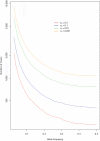
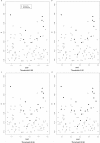

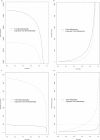
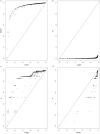
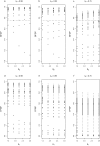
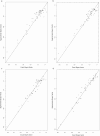
References
Web Resource
-
- J.W.'s Web site, http://faculty.washington.edu/jonno/cv.html
References
MeSH terms
LinkOut - more resources
Full Text Sources
Other Literature Sources

